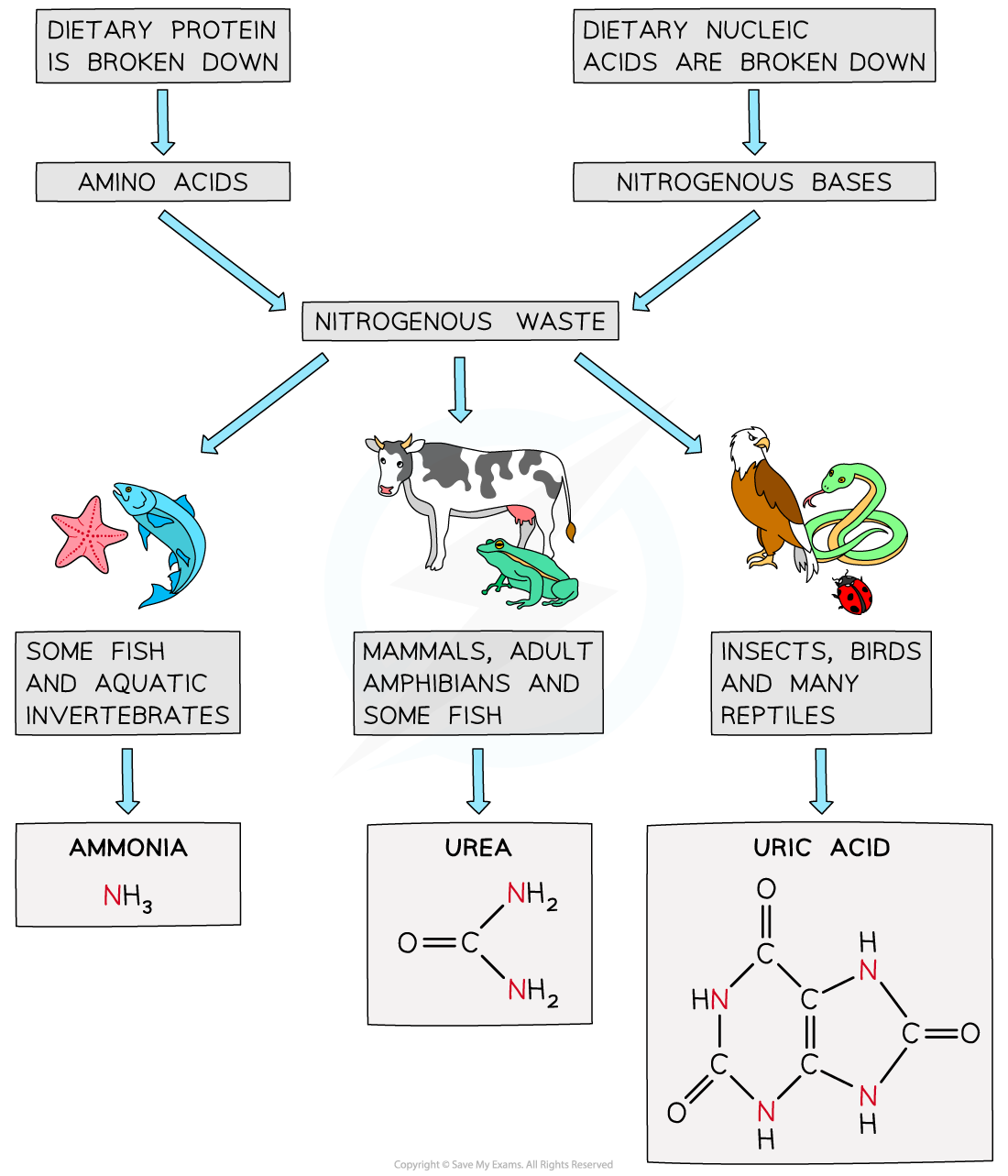- 翰林提供学术活动、国际课程、科研项目一站式留学背景提升服务!
- 400 888 0080
IB DP Biology: HL复习笔记11.3.5 Types of Nitrogenous Waste
Types of Nitrogenous Waste
- Nitrogenous waste comes from the breakdown of excess dietary amino acids and nucleic acids
- The waste is first converted into ammonia; some organisms excrete it in this form
- Ammonia is highly toxic, so some organisms convert it into urea before excretion, while others convert it into uric acid
- The way that this nitrogenous waste is excreted differs depending on the requirements of an organism and its environment
- Ammonia is highly toxic; it cannot be stored in the body and must therefore be removed quickly from the body
- Aquatic organisms live in a watery environment so they can excrete ammonia directly into their surroundings where it is diluted to a safe level
- Organisms that excrete ammonia directly include some types of fish and aquatic invertebrates
- Some organisms convert highly toxic ammonia into less toxic urea; urea can remain in the body at low concentrations, but needs to be excreted before it builds up to a harmful level
- Organisms that excrete urea need to dilute it with water to form urine before it is excreted, so some spare water availability is necessary
- Urea is excreted by mammals, adult amphibians, and some fish
- Despite living in an aquatic environment, marine mammals still release urea rather than ammonia; this is due to their shared evolutionary ancestry with the land mammals
- Ammonia can also be converted into uric acid; this requires more energy than converting to urea but comes with other advantages
- Uric acid does not dissolve in water, instead forming crystals in solution; this means that less water is needed to excrete uric acid than urea
- This is useful for organisms such as birds and insects, for whom carrying water in their bodies could be problematic; carrying water would make their bodies heavier and flying would be less energy efficient
- Uric acid aids the survival of animals that develop inside an impermeable egg shell; if they produced water soluble urea they might poison themselves with their own waste before hatching, but the crystal-forming uric acid does not affect development
- Uric acid excreting animals include birds, arthropods such as insects, and reptiles
- Uric acid does not dissolve in water, instead forming crystals in solution; this means that less water is needed to excrete uric acid than urea
- Some animals excrete their nitrogenous waste in different forms at different stages of their life cycle e.g. amphibians excrete ammonia during their aquatic larval stage and urea when they develop into adults

Nitrogenous waste can be excreted as ammonia, urea, or uric acid
转载自savemyexams

最新发布
© 2025. All Rights Reserved. 沪ICP备2023009024号-1









